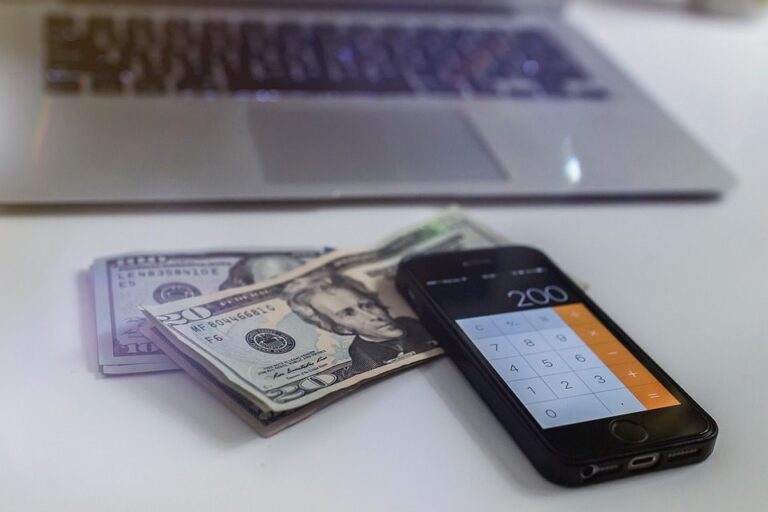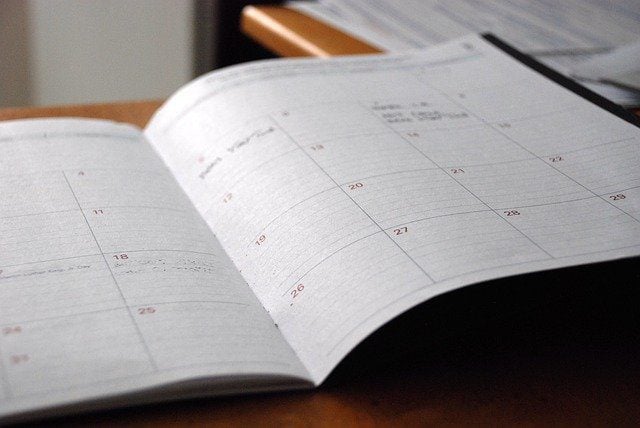IRS Fresh Start Program Explained
This page is for you if you want to cut through the BS and take full control of fixing your tax problems.
***
Do you know this Fresh Start Myth that causes people to pay THOUSANDS more than they should?
Let’s break through the confusion and give you the facts.
May it help you get past the big promises that don’t actually solve your tax issues.
***
The first thing I tell people is…to truly get this…you have to realize the Fresh Start Program was not launched as some massive windfall for taxpayers who are behind. No.
It was created to help the IRS collect debt. The IRS knows some people aren’t looking for a reduction. They can afford to pay and don’t question any IRS finding.
These people are Fresh Start candidates.
While there are many positive attributes to this program, there are many misconceptions and myths around it too.
The Most Damaging Myth about IRS Fresh Start Program Caused By TV Ads
So what is this misundertanding that is costing taxpayers thousands of dollars?
Many people believe…incorrecty…that the Fresh Start is a settlement, and will stop penalties and interest AND reduce your debt
And how does that cost taxpayers thousands of dollars?
First, they sometimes call one of the TV ads and end up paying a company for a service that could be done for free without hiring anyone.
Second, they end up in a Fresh Start payment plan and fully pay the debt when they could have settled their tax debt. They could have used a program that actually reduces the debt.
And finally they agree to an IRS payment plan they cannot afford. This starts a cycle for many people which ends in defaulting the agreement, causing even more penalties.
All of those are avoidable, of course, if you get into a program that fits your budget.
Other Myths about Fresh Start
Some other Fresh Start Myths include:
· Qualifying is complicated
· You need a lawyer or “tax expert” to get it done
· The people running those TV ads are lawyers
· Fresh Start fixes outstanding tax issues beyond balances owed
Debunking the Myths and the Truth behind All Those Ad Promotions
Is This Tax Debt Relief?
Here is the truth. Some good, some not-so-good…but to be warned is to be armed!
No Settlement. Fresh Start never reduces your debt. You will be paying in full to fix your tax problems.
Simple to qualify. Qualifying for Fresh Start has three simple rules for the standard program.
No need for a lawyer. As a taxpayer, you have the right to get into this program on your own and it’s possible to do it without hiring a lawyer or anyone.
Those ads are from marketing companies. Every ad I have ever seen for Fresh Start is run by a call center company.
Does NOT Fix any tax mess. Fresh Start does absolutely NOTHING to address issues beyond paying your debt. It does not address unfiled returns, current tax years, or future payments.
Simply put: Fresh Start is an agreement to pay off IRS tax debt in monthly payments. Assuming that is what you want, let’s get right into how to get it done if you want to just pay them back. Note this is different than the Offer in Compromise which was modified at the same time the Fresh Start was launched.
Want to explore the Fresh Start program and ready to get started?
Here you go!
It involves four easy-to-follow steps:
Step One: See if you qualify.
Step Two: Calculate your payment.
Step Three: Contact IRS to start payment.
Optional Step Four: Remove Federal Tax Lien if you have one.
See, it’s that easy.
Let’s get into each step.
Step One: Do I qualify for Fresh Start?
This is also simple. You qualify for this if you:
1. Have all your tax returns filed.
2. Want to pay them back and can afford the monthly amount.
3. Have a debt of less than $250,000.
[Caution: Calculating payment amount is more complex if you owe between $50,000 to $250,000. See below for explanation.]
4. Don’t have “too many” past broken agreements with IRS. They don’t tell us what “too many” is, though.
If you don’t qualify but want a payment plan or settlement, THEN it might be wise to consult a licensed practitioner. Click HERE to contact an experienced tax professional.
IRS Fresh Start Calculator
Step Two: Calculate your payment.
If you owe under $25,000, you’re going to multiply your total IRS debt by .01917
Example: You owe $16,122.
Payment is: 16,122 X .01917 = $309.06
You will pay that for 5 years which is 60 months. This will pay them in full a day or two before the final day of your 60 months is up provided you don’t miss a payment and have no future tax problems.
If you owe $25,001 to $50,000, you’re going to multiply your debt by .01639.
Example: You owe $36,872.
36,872 X .01639 = $604.33
You will pay that for 6 years which is 72 months. As before, this will pay them in full a day or two before the final day of your 72 months if you don’t miss a payment and have no future tax problems.
However, there are TWO EXCEPTIONS:
1. If you owe between $50,001 and $250,000? Please see bottom of page as that Fresh Start needs you to do a few extra steps.
2. If you have 1099 income or own a small business, please also see bottom of page. There is a Fresh Start option but the rules are different.
Apply for IRS Fresh Start
Step Three: Contact IRS to start payment.
Now that you know the payment you want, you have three choices that get the Fresh Start rolling:
1. Call them at 800-829-1040.
2. Go to the IRS payment plan portal and complete application.
https://www.irs.gov/payments/online-payment-agreement-application
3. Mail in two forms.
a. Form 9465, Installment Agreement Request to formally request to pay.
b. Form 433D. This form causes IRS to take your payment by automatic deduction from your checking account. After three payments are deducted, the IRS will wipe out any Federal Tax Lien (if you have one). Paying this way also prevents future liens.
Once you’ve made three payments via auto-deduction, you can Submit Form 12277 to request Lien Withdrawal to have any existing Federal Tax Lien removed.
Four IRS Trip Wires—How People Mess This Up
First Trip Wire: You didn’t file all returns. You cannot get a Fresh Start Agreement if you’re behind on filing. You need to file first—all of your returns.
Go HERE to learn how to file old returns.
Second Trip Wire: Your payment is too low because your debt is old.
Your payment AMOUNT will change, sometimes significantly if:
- You owe up to $25,000 and your debt is more than five years old
- You owe between $25,000 and $50,000 and your debt is more than FOUR years old.
Why? The IRS only has ten years from the start of the debt to collect. As you move closer to that 10-year date, they either increase your payment amount or force you to disclose the maximum amount you can pay.
Third Trip Wire. You’re in Fresh Start but then have another tax issue down the line. Usually this happens to people when they don’t file a tax return that is needed or they run a balance in a future year.
If you file late, your Fresh Start defaults. Basically, it is canceled. You need to file all your returns on time always.
Similarly, if you run another debt, your existing Fresh Start Agreement defaults.
In both cases, you must start again with your new debt amount.
Meaning: You will have to request a new agreement with the IRS.
The IRS usually allows this second Fresh Start. But sometimes they deny the request and make you show them all your financial information and records.
At that point, they analyze your financials and tell you what minimum payment they will accept.
You can fight to get that minimum payment lowered and we do that every day.
But it is a fight.
Some taxpayers seek help at this point if the IRS indicates an unaffordable payment amount is required.
Fourth Trip Wire: You make a bank error.
The main two bank errors are:
1) Closing the bank account you were using for IRS auto deduction OR
2) Bouncing an auto payment due to low funds in the account.
Obviously, both of these are avoidable but can default a Fresh Start Agreement.
Good luck to everyone who wants to take the next step.
Stuck? Get Help With IRS Debt From An Experienced Tax Attorney or Tax Professional.
If you need help or can’t fully pay, give us a call at 312-345-5540.
You can count on straight-talk and connecting with a licensed professional on the first call.
Any information you share with us will be kept confidential.
P.S. In case you want to know more about me, our team, and what solutions we provide to provide you tax relief, you can visit www.thetaxdefenders.com/about-us
Why Choose The Tax Defenders to help with your tax issue?
· Team of professional Attorneys and CPAs with extensive IRS experience
· Negotiated millions in tax settlements
· Twenty-years in business, focused only on tax problem resolution
· Maintained BBB A+ and Google 4.8 Star Rating
· Veteran owned and led
· Knowledgeable professionals who understand your finances and business
Fresh Start Initiative For Higher Debt
If you Owe Over $50,000 or have 1099 Wages
If you owe over $50,000 but less than $250,000 the Fresh Start will still allow you to pay your debt in monthly payments. You’ll be fully paying the debt including interest and penalties. You also can’t have any past due returns and must pay current year estimated tax payments on time.
1. Step One. Know how long the IRS has to collect the debt. Here you will calculate the number of months that you have to pay back the balance
2. Step Two. Know Payment Amount You’ll Tell IRS. Here, you figure out approximately how much you’ll pay each month.
3. Step Three. Send Monthly Payment Proposal. Now that you know the amount, you just need to tell the IRS that you’d like to pay monthly. You can call, mail proposal or submit online. If you fit, they will say YES very easily.
IRS Fresh Start Guidelines are slightly different for debt over $50,000
Step 1
Know how long the IRS has to collect the debt. Here you will calculate the number of months that you have to pay back the balance
The IRS typically has 10 years from date of assessment to collect. The assessment date can be either when a return was filed or a balance was imposed from an audit. The CSED can be “tolled” or extended for certain amounts of time depending on the certain IRS or taxpayer activity. The IRS has a system for tracking the CSED and will give you the CSED date if you ask.
1) Contact the IRS and ask what the CSED date is for each balance.
2) Once you have the CSED date, you can calculate your payback as follows:
a. Take the balance owed for that year and divide it by months until that CSED date.
b. Example – today is 12/2022 and the CSED date is 12/2030 – that would be 8 years X 12 months. You would divide the total balance owed by 96 months to calculate the monthly payment
c. This gets tricky if you aren’t working in whole numbers – for example, if you are in 6/2022 and the CSED happens in 8/2026, then the payoff will be 50 months – 2 months to get to 8/2022 + 4 years X 12 months.
3) Note – the CSED date can be different for each year. So if you have multiple years with multiple balances, this can get complicated. You’ll need to calculate each year separately to find the latest CSED date and then map your payments back from there.
Step 2
To figure your total monthly payment to the IRS you will need to calculate the payment of the balance owed the monthly interest. The IRS interest rate is determined quarterly, based in part on the federal short term rate.
- Calculate the monthly interest – take the total debt owed and multiply it by 0.0025. This will give you the amount of interest you need to add to your monthly payment
- Next, calculate the monthly payment for the tax debt – take the total tax balance owed and divide it by the number of months the IRS has to collect.
- Add the balance payment plus the interest payment to get your total monthly payment
Example: You owe $150,000
$150,000 X 0.0025 = $375
Example: You owe $150,000 and CSED date ends in 7 years
$150,000/ 84 months (7 years) = 1,785
Balance payment $1,785 + interest $375
Equals = $2,160 per month
Step 3
You have three choices that get the Fresh Start rolling:
Easiest is IRS fresh start phone number
- Call Fresh Start at 800-829-1040.
- Go to the IRS payment plan portal and complete the application.
- Mail in two forms.
https://www.irs.gov/payments/online-payment-agreement-application
- Form 9465, Installment Agreement Request to formally request to pay.
- Form 433D. This form causes IRS to take your payment by automatic deduction from your checking account. Paying this way, even for higher debts, usually prevents future liens.
Fresh Start Requirements For Self-Employed
For Self-employed (1099) workers seeking a Fresh Start agreement, you must show:
- Your income has reduced by 25%
- You’ll pay the debt in full before the 10-year collection window closes
- You are current with federal tax filings and estimated payments.
- Owes less than $25,000
- Pays the debt in full within 34 months
- Is current with federal tax filings and estimated payments.
- Has never before fallen behind on tax payments with the IRS.
IRS Fresh Start 2022 For Businesses
For businesses, the IRS Fresh Start will work if the business:
This may also qualify the business for some penalty forgiveness.
Seeking Offer in Compromise as you consider IRS Fresh Start?
If you need help or can’t fully pay, give us a call at 312-345-5540.
You can count on straight-talk and connecting with a licensed professional on the first call.
Any information you share with us will be kept confidential.
P.S. In case you want to know more about me, our team, and what solutions we provide to provide you tax relief, you can visit www.thetaxdefenders.com/about-us
Why Choose The Tax Defenders to help with your tax issue?
- Team of professional Attorneys and CPAs with extensive IRS experience
- Negotiated millions in tax settlements
- Twenty-years in business, focused only on tax problem resolution
- Maintained BBB A+ and Google 4.8 Star Rating
- Veteran owned and led
- Knowledgeable professionals who understand your finances and business
Related Questions
Is there really an IRS Fresh Start Program?
Yes. The IRS Fresh Start Program is a set of initiatives that the Internal Revenue Service (IRS) launched in 2011 to help struggling taxpayers. The program includes a number of features and payment options.
That said and despite its name, the IRS Fresh Start Program is not really a new program – it’s simply a collection of existing programs and initiatives with some modifications that the IRS has gathered under one umbrella.
How much will the IRS usually settle for?
Is the IRS forgiving tax debt?
Some people believe that the IRS is automatically forgiving tax debt under the Fresh Start program. This is not true. The IRS will only forgive tax debt if the taxpayer meets certain conditions and criteria.
If you’re struggling to pay your taxes, it’s important to understand all of your options. The IRS Fresh Start program can help you get back on track, but it’s important to know the facts.
How do i qualify for IRS fresh start?
The IRS’s fresh start initiative is designed to fully pay outstanding taxes. Basic qualifications for the program, are:
– owe less than $50,000 in taxes
– have filed all required tax returns
– agree to a payment plan with the IRS






